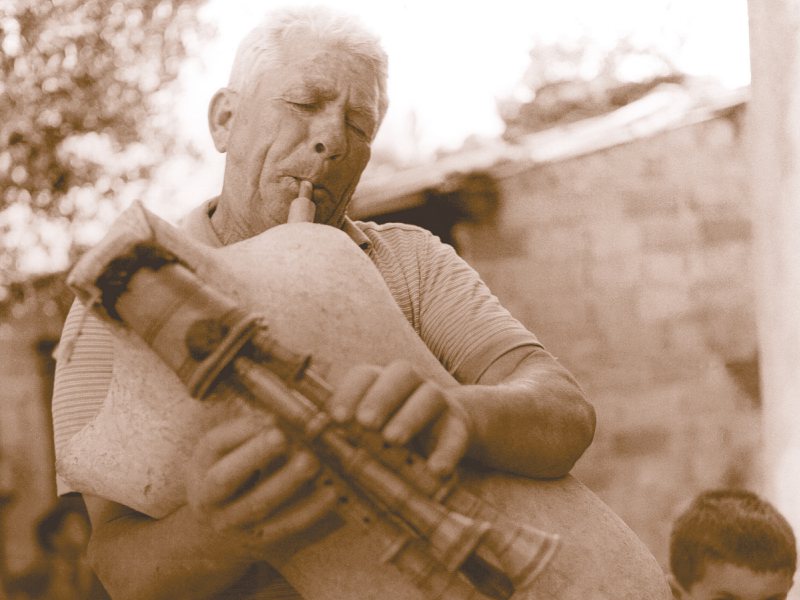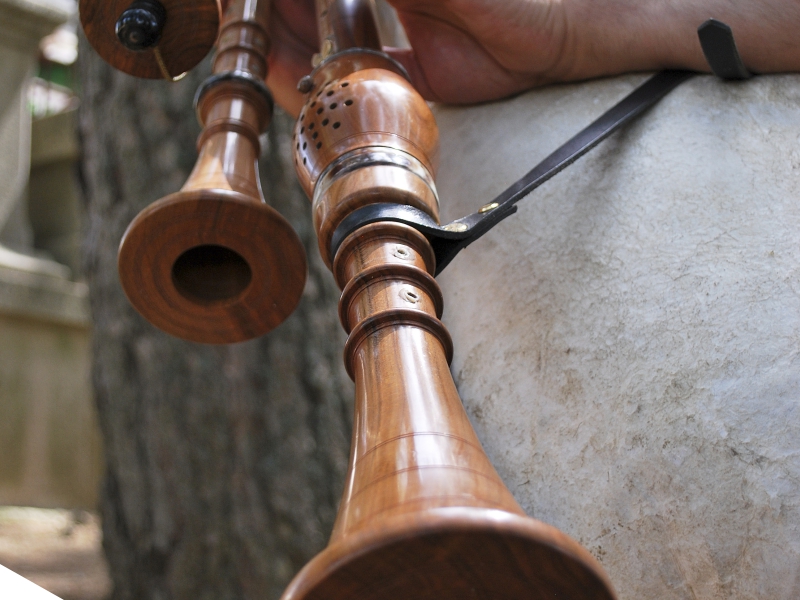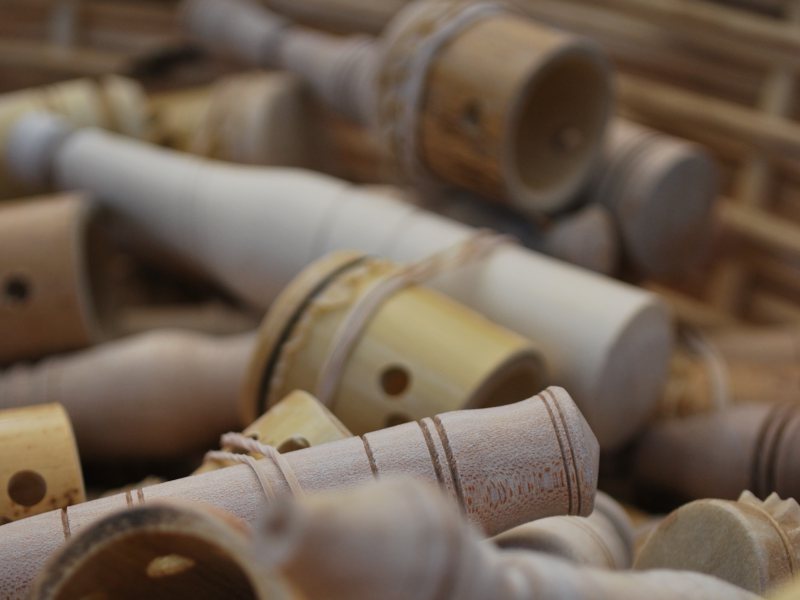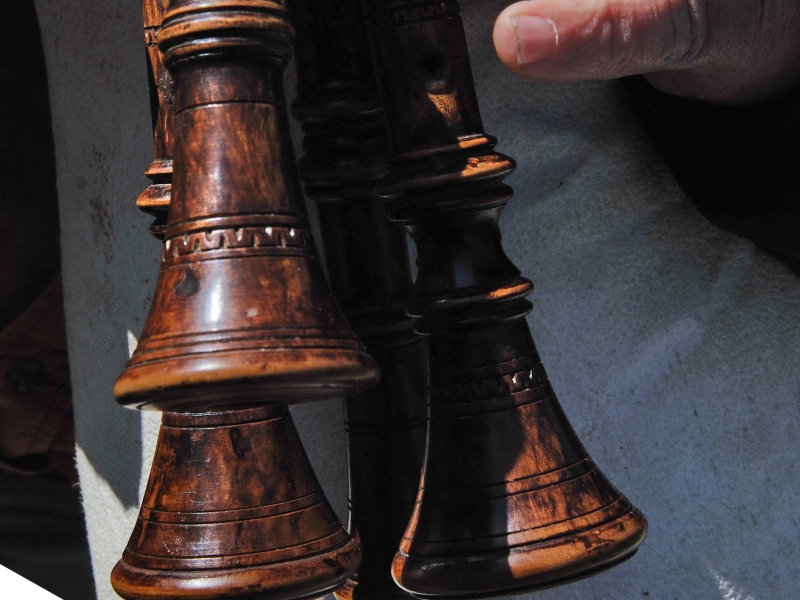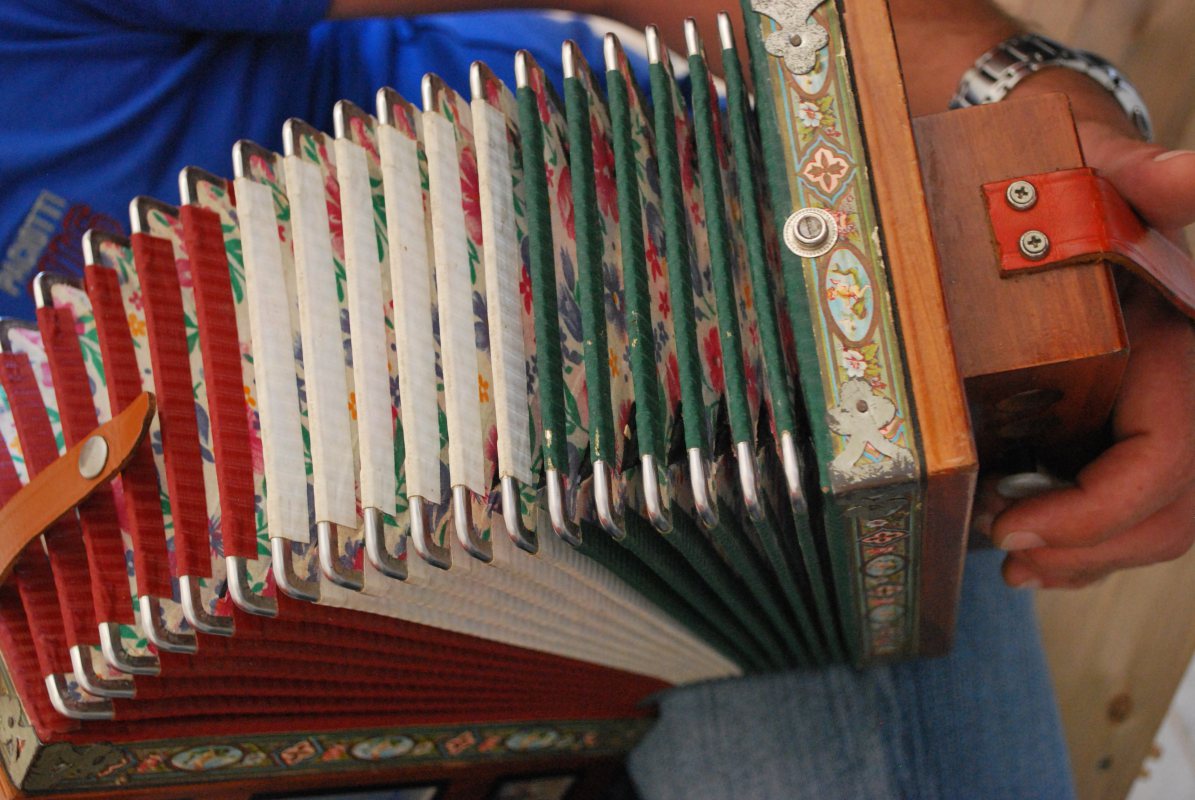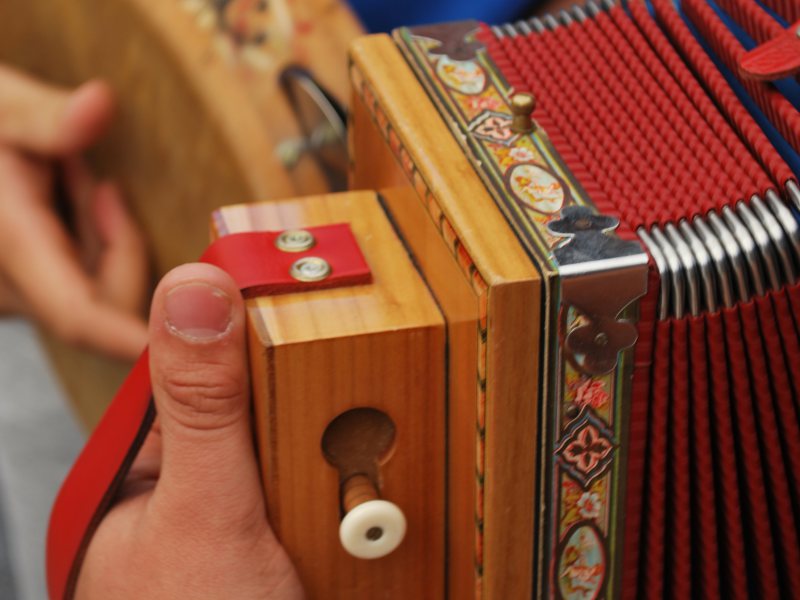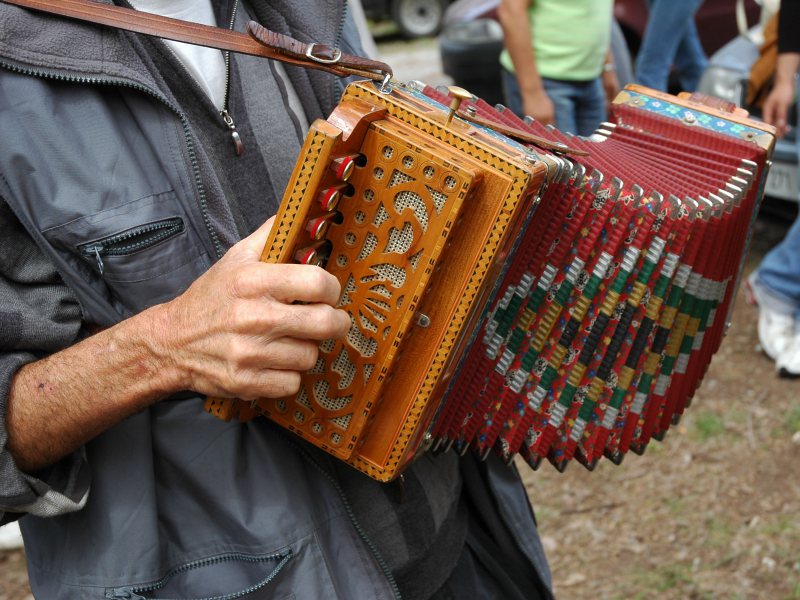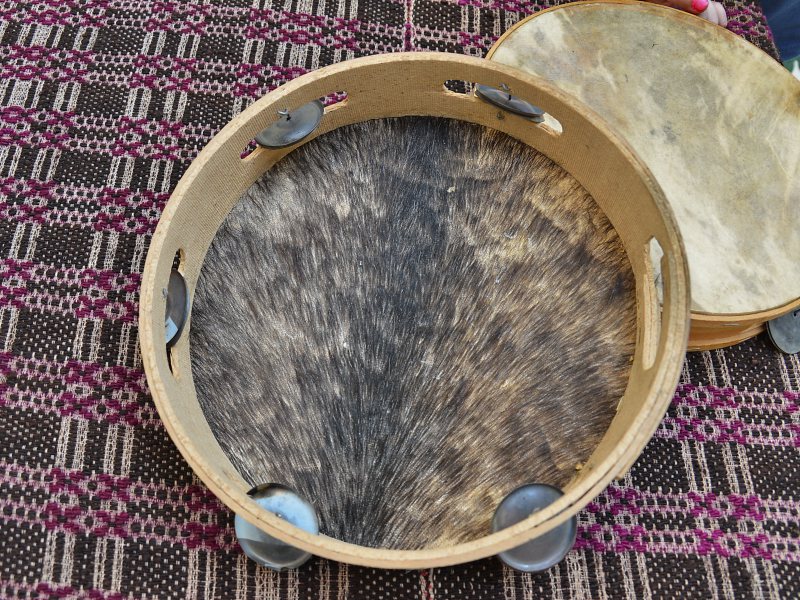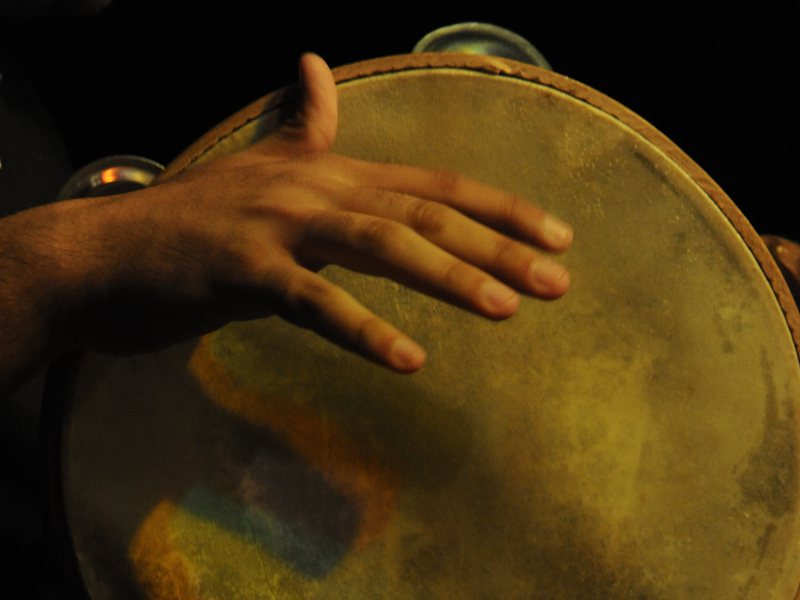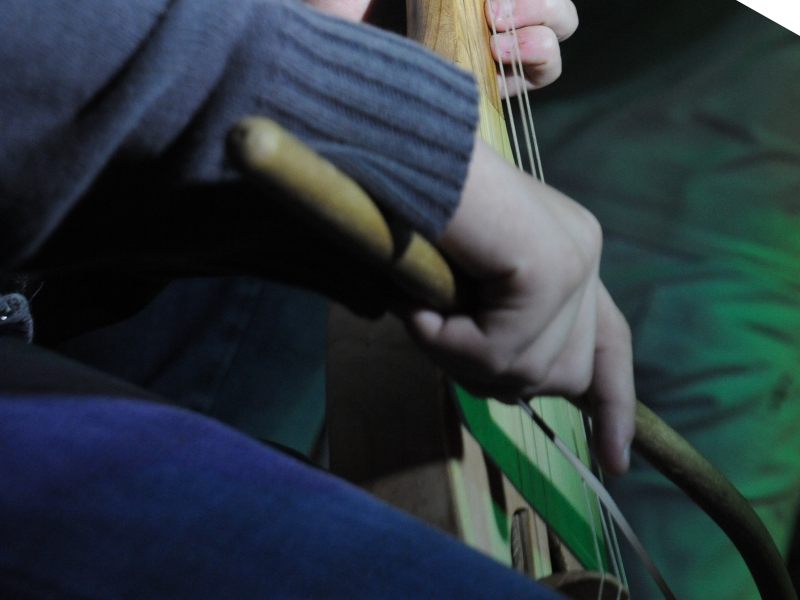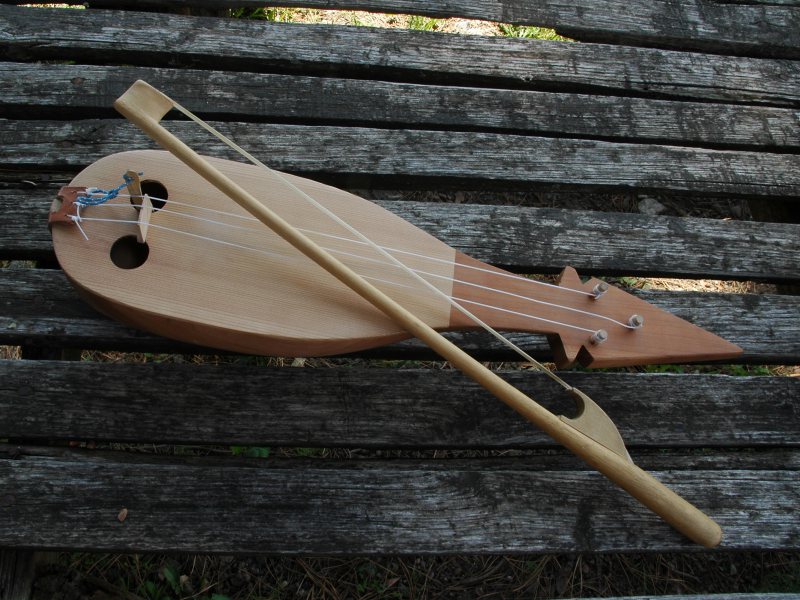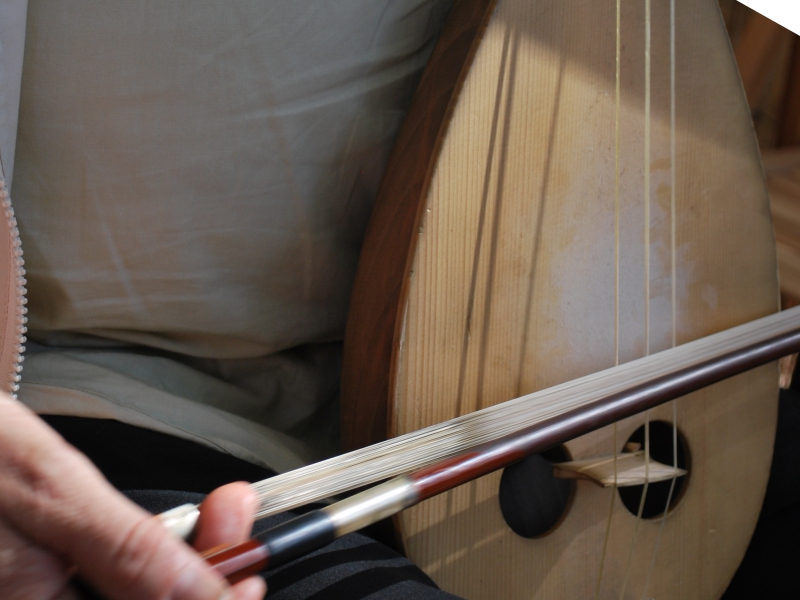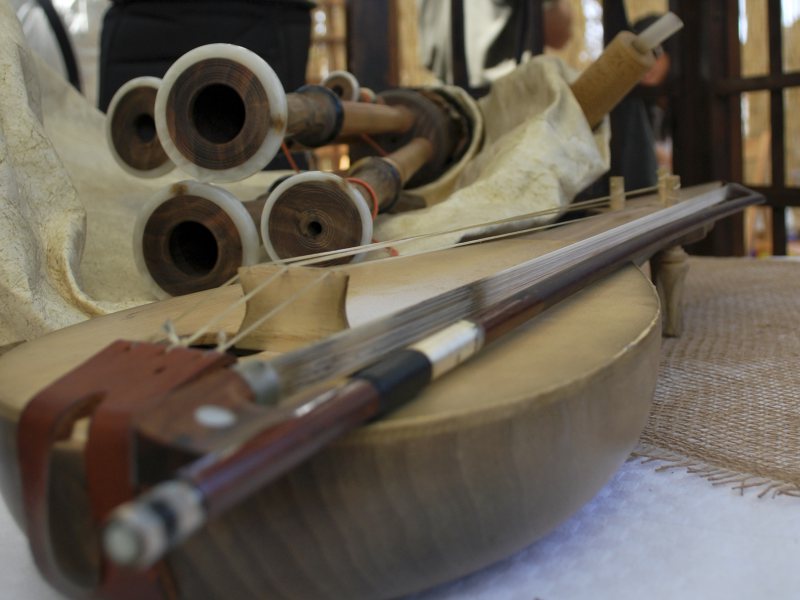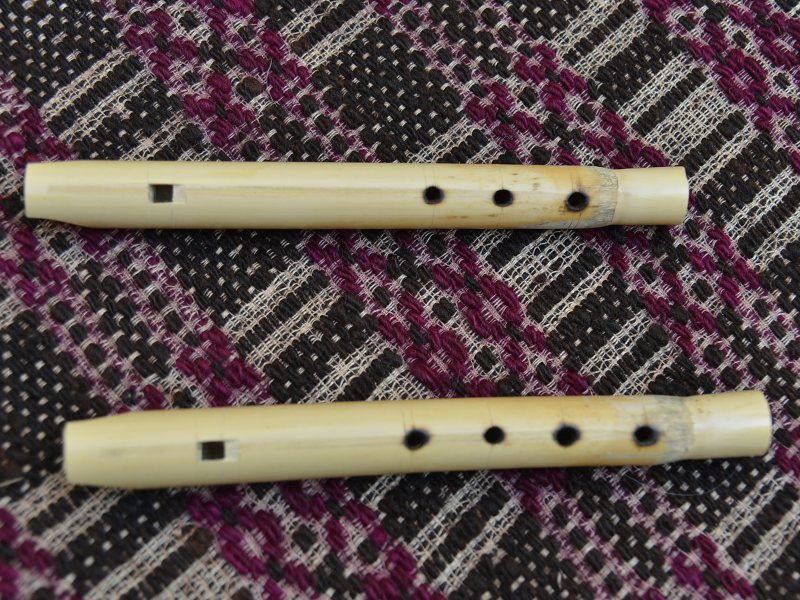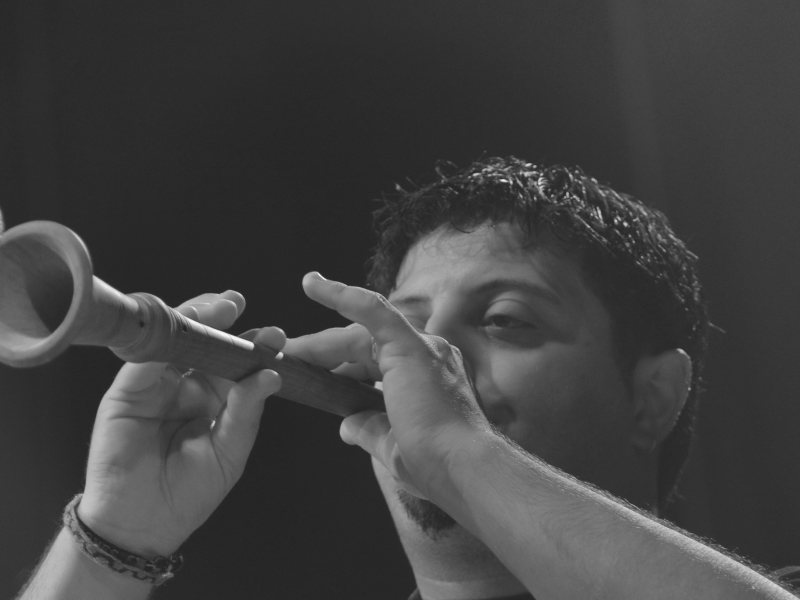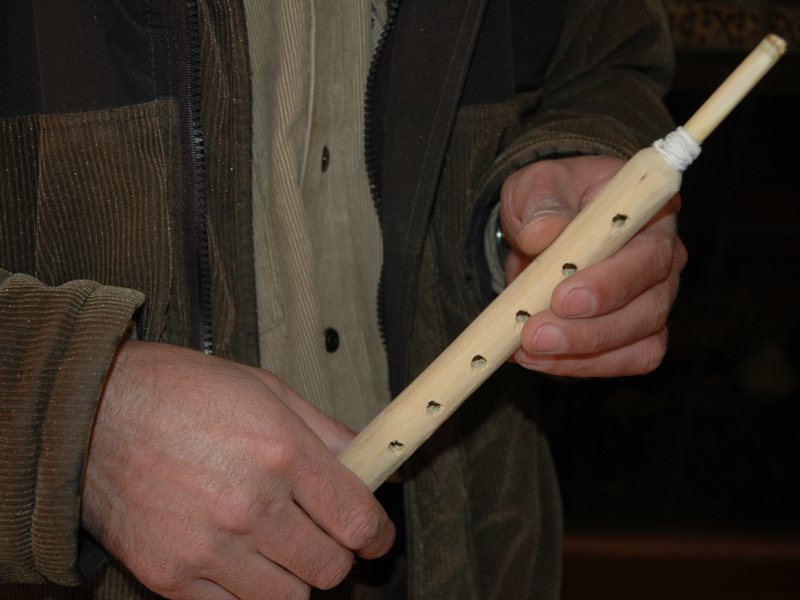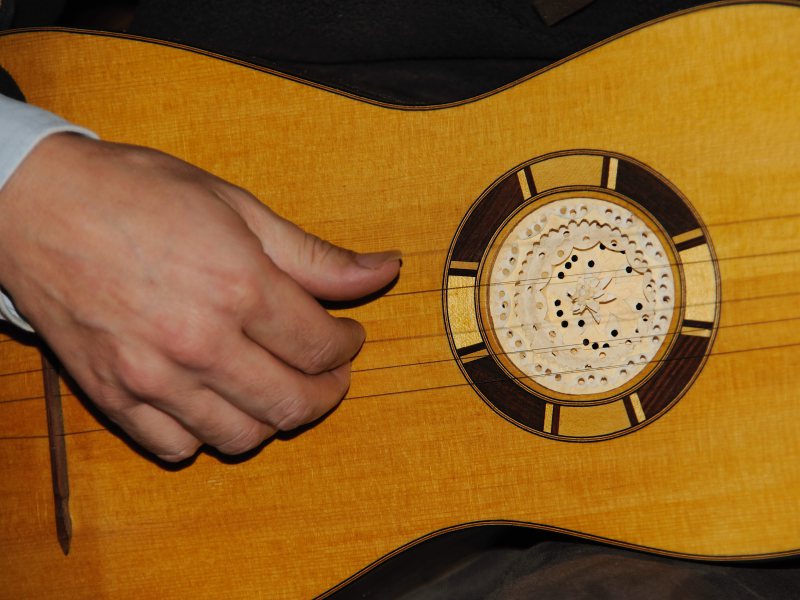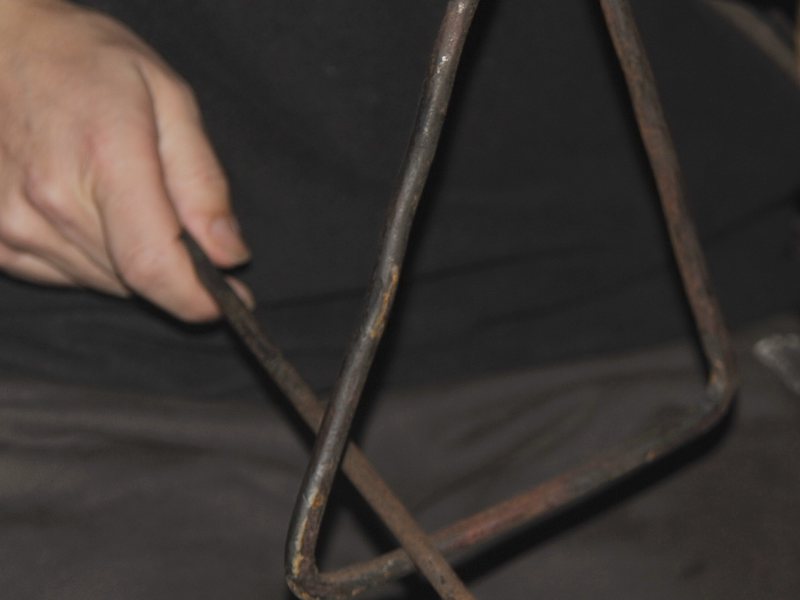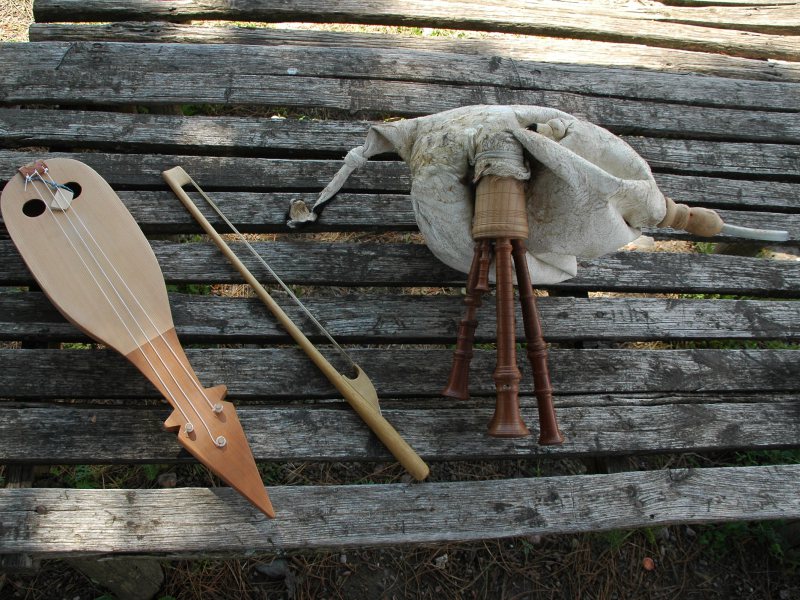Musical Instruments of Greek Calabria
Descrizione

I Cerameddhe Zampogna
“Smìngondo sto choro ti vvradìa to glicìo tragùdi to ppuddhìo, i melodia ftinì ti cceramèddha, cheretònda tin imèra; annapèondo i spichè ande ppricàde, ande ccurasìe …”
“The sweet song of the birds, the soothing melodies of the bagpipes, all join in the dance in the evening, saluting the day; hearts recover from bitterness and trouble …”
Choro ti vvradìa, Dance of the Evening Spichì sto monostròfiddho by Salvino Nucera.
The cerameddhe (bagpipes) are the princes of the Greek-Aspromonte district’s musical instruments. The older players of the cerameddhe claim that before learning to play them, it was necessary to spend a long time studying the sulàvria [double straight flute]. Only those who mastered the double flute, could hope to become good cerameddhe players.
In the Greacanic area there are two types of bagpipes, the ceramedde a paru and ceramedde a moderna, the latter which has come to be considered, alongside the language, an element of distinction of the Graecanic ethno-musical heritage.
Cerameddi a paru – the a paru bagpipe
The main characteristic of this instrument is that its two chanters are of equal length, which is why it is called a paru (equal). It has three drones, the bass “u zumbacu“, the middle-range “a quarta“ and the high-pitched “u cardiddu”, all tuned in the dominant key. This instrument is found not only in the Graecanic district but in the whole of the Aspromonte area and in Eastern Sicily; in the Calabrian Serre it is known as a “terzarola”.
Cerameddi a moderna – the a moderna (modern) bagpipes. The salient feature of this instrument is the different lengths of its two chanters, the left one being longer than the other. This instrument came into existence in the nineteenth century and was called a moderna to distinguish it from the pre-existing a paru. This name seems to have been given to it by players from the Bova district. This pipe also has three drones: the bass “u zumbacu“, the middle-range “a quarta“ and the high-pitched “u cardiddu”. In Bova and the Amendolea Valley the bass drone is tuned in the tonic, the other two (mid-range and high) in the dominant. In the villages of Staiti, Pressocito, Brancaleone, Razzà di Brancaleone, and also in Cardeto all three are tuned in the dominant, like the a paru pipes.
Today both kinds of zampogna use a single reed, although, in the past they sometimes used a double reed too. The bass “u zumbacu” is not always mounted, except in the a moderna pipe of the Bova school.
To ascìdi delèghi ton fiso ando cerameddhàro ce fisènete, otu i ceramèddhe crùnnusi.
The bag receives the air blown by the player and swells, and so the pipes sound out.
The oldest bagpipe models registered in the area belong to the first half of the last century, the maker was Lorenzo Trapani, “u turnaru” [the turner], who made them employing a pedal lathe in his house in the country in the Sporiscena district of the Municipality of Roghudi. His instruments, from an organological point of view, are considered exemplary models even today, not only for their sound but their artistic and aesthetic value too.
To obtain the bag for a cerameddhe the skin of a goat of less than a year old, that has never bred, is used, because this kind of skin offers better performance and greater reliability. To remove the whole skin, requires the expertise of a shepherd or butcher. Having sheared the hair off, the skin is tanned in salt for a certain amount of time and then turned inside out.
For the ligneous parts, the most commonly used and most highly considered woods are those of the heather, the cherry, the walnut and black mulberry. For the reed, it is necessary to look for cane growing at a distance from waterways, in dry soil, in springtime. The same applies to the cane used for the sulàvria, double flute.
Recording of Pietro Navella playing the Cerameddhe a Paru; the song is sung by Mimmo Nucera “Milinari” (Audio Link)
Arganettu, button accordion
“I astrofenghìa to seri macrìa to cruma tu organèttu ce tamburèddhu. Ene jiortì, trèchonda cataò, catacì, chorèvji mia spichì…”
“The starry night carries the sound of the accordion and the tambourine far. It is a festive evening, a soul dancing, runs here and there…”
Chimàrri A village celebration by Salvino Nucera
The older members of the community agree that the button accordion appeared in the Graecanic area only at the beginning of the twentieth century. It spread easily and rapidly because people became aware quite soon that the instrument did not suffer from changes in climate, or from changes in daily or seasonal thermal excursions. As well as that it was less demanding to use.
The arganettu is found throughout the area in the two-bass version. It is found most frequently in Cardeto and Gallicianò, where there are some extraordinary performers. Today it has replaced the cerameddhe almost completely, also because it is easier to manage and has no tuning problems. It is used both to play dance music and accompany singing.
Today, listening to young musicians from the area, one can notice stylistic influences from the city of Reggio Calabria. This is also due to the spread of commercial “folk record” productions that have taken place in recent years, leading to a homogenisation and standardisation of repertoires and musical style. So, traditional music and dance have been mistakenly dropped from everyday life and transformed, in many cases, into folk show business.
In the towns and villages of the Graecanic area, as indeed in many other parts of Calabria, the study of the arganettu and performance on it have become ambitious goals to achieve. The entire community feels a profound sense of respect for who have become good sonaturi. All of this has strongly urged children and young people to study and play the instrument.
Recording of Giovanni Zindato of Gallicianò on the Arganettu and Tambureddhu (Link Audio)
Tambureddhu Tambourine
This instrument is a member of frame-drum family. In the past, the frame of a sieve or riddle was used to build the drum. Little slits were made in the wood for the metal cymbals. In some cases holes were also made to house small bells.
The skin used today is usually goat, although, in the past, some players preferred cat, even dog.
U tambureddhu is an instrument that women too play, and is used to accompany the dance tunes played on the bagpipes or button accordion.
Sulàvria Fischiotti – Double straight flute
Jiòmmu me ta sulàvria ce i manat tragudài: mia charapìa!
He playing the flute, his mother singing: how delightful!
One of the first instruments when approaching the music of Greek-Aspromonte is the sulàvria or in dialect, fischiotto, whistle/flageolet. In this area they come in two versions of the type known as a paru which differ according to the number of holes in the left pipe called “u masculu” [the male] .
The first a paru model is a straight double flute with a wedged mouthpiece, having pipes of the same length and parallel holes; the right-hand pipe, called “a fimmina” [the female] has four holes in front and one at the back; the left-hand pipe, “u masculu” [the male] has three holes on the front.
The second a paru model is a straight double flute with a wedged mouthpiece, having pipes of the same length and parallel holes; the right-hand pipe has four holes in front and one at the back, the left-hand pipe has two holes on the front.
In other areas of the Aspromonte and Serre-Calabresi districts there are other models of double flutes called a paru, but their characteristics are quite different.
The double flute has always been associated with pastoral life. It is an instrument which still exercises great charm; It is easily carried, although today very few play it, and just as few people are able to make one.
Recording of some Sulàvria (Link Audio)
Sulavvròta Fischiettara – The burk flute
The sulavvròta is a flute obtained from the bark of the fresh basal shoot of a chestnut. The best time for cutting the bark is spring. This is an ephemeral instrument. The shoot is particularly suitable because it is rather long and often contains a stretch of trunk free of shoots. The wedge is made from a segment of the wood extracted from the bark. Along the pipe there are no finger holes.
The sulavvròta is still made and played by shepherds here. The notes obtained are harmonics produced by changes in breath pressure, and by alternating opening and closing of the end hole using the tip of the index finger.
Recording of a Sulavvròta (Link Audio)
Source
Booklet Collana Editoriale del Parco Culturale della Calabria Greca – Sezione Musica e Danza. A cura di Domenico Morello, Salvino Nucera, Francesca Prestia.




